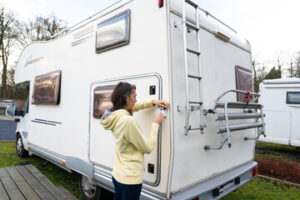If your roof is nearing its expected lifespan or shows signs of extensive damage, it’s probably time to replace it. In a standard replacement, a reputable roofing contractor will make minor repairs, replace bad wood with new 1 x 6 sheathing boards or plywood and install underlayment, ice dam protection, metal drip edging, valley flashings and ridge vents.

Your roof is your home’s first line of defense against the elements. It stands up to blazing sun, pouring rains, gusty winds and snow and ice for decades, protecting your home from water damage and other problems. Reach out to Roofing Helena MT for expert assistance.
But over time, wear and tear takes its toll on the structure. Eventually, you’ll need to replace your roof with newer materials if the damage is severe or widespread.
During roof replacement, contractors remove the old shingles and felt paper or moisture barrier before installing new materials. They may also repair any decking or other components that are damaged during the removal process. It’s also a good time to cut back any encroaching trees or move outdoor objects that could be hit by debris during the re-roofing process, such as plants, ceramic landscaping features and satellite dishes.
Whether you’re replacing a small section or the entire roof, it’s important to understand the construction of your roof and the different materials that are used in its construction. While this article won’t cover the actual structure of a roof, like rafters and trusses, we will talk about the different layers that make up your roof system. This will help you better understand what to expect from a roof replacement and how the various materials work together to protect your home. Also, keep in mind that it’s often a good idea to run the edge of the new section to a ridge or valley, which will minimize comparison between old and new sections.
The Materials
There is a lot of information out there about what type of roofing materials you should use, and it can be overwhelming. The truth is that there is no one-size-fits-all solution. Your choice of material will depend on the predominant style of home in your area, the climate where you live, and the budget that you have to work with.
There are many different types of roofing materials on the market, including shingles, metal, and tile. Each option has its own advantages and disadvantages. Some roof materials are more suited to certain climates than others, and the pitch (angle) of your roof can also influence which materials you choose.
Regardless of the roof type you ultimately choose, there are several other materials that are necessary to complete your roof replacement. These include:
Pipe boots are pieces of rubber that fit securely around the holes in your roof created for ventilation pipes, such as those that release gas or moisture from the house. These are essential to prevent water and air from leaking into the house. Roofers will typically replace these when doing a roof replacement.
Sheathing boards are the base of your new roof and help to protect it from water damage. These are normally made from plywood or oriented strand board (OSB). During the roof replacement process, sheathing boards may need to be replaced due to soft spots or wood rot.
In some regions, you will need to install ice dam protection for your roof. This is a synthetic waterproof barrier that helps to prevent melting ice from backing up under the shingles and penetrating through sheathing boards and into the house.
Lastly, your new roof will need flashing to seal the areas where the roof meets other surfaces on your home or other structures like chimneys and vents. Flashing is usually made from galvanized steel or copper and can be pre-painted, or left to oxidize for a raw metal finish.
There are also various types of shingle underlayment that can be used to add an extra layer of protection to your roof. These are normally tucked under the shingles and secured with adhesive or nails.
The Installation Process
As you can imagine, roof replacement involves much more work than just repairing your roof. It requires the tearing off of your old roof and installing new roofing materials. This process can take up to a day, depending on how large your home is and how complex its roof structure is. It also depends on the weather conditions. You will have to move things inside your home or put items away to protect them from being damaged by rain, wind, and debris. The first thing your roofer will do is to remove any protrusions like chimneys, skylights, and vents. Once the roof is clear, they will start with the tearing off process.
Once the old shingles are removed, your roofer will install new felt or moisture barrier. They will then begin putting on rows of new shingles, starting at the eaves and metal drip edge and working upward toward the ridge. They will also replace the flashing, which is installed over joints on your roof to prevent water seepage. This includes the flashing around your roof’s valleys, chimney, and vents.
After the shingle layer is complete, your roofer will install ridge capping and any vents needed for your roof’s ventilation system. They will also install any other protective systems your roof may need, such as ice dam protection and underlayment.
Before the roofers leave, they will have to do a quality assurance inspection. This is done by an independent professional who makes it their job to check the workmanship on your new roof and ensure that it meets the high standards you agreed to.
When your new roof is finished, the contractors will clean up any debris that has fallen. They will also blow off your roof to ensure that all of the trash is gone. They will then come back and do a final inspection to make sure everything was installed correctly.
While a full roof replacement is the most expensive way to get a new roof, there are many financing options that can help you pay for it. Some of these include a cash-out refinance, a line of credit, or even charging the purchase to your credit card. It is important to discuss these options with your contractor so that you can determine the best course of action for you.



